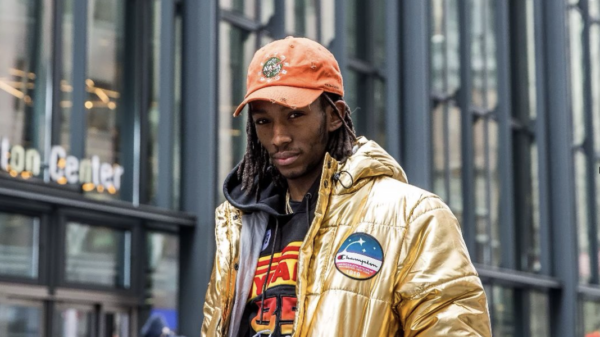This may a difficult thing for anyone who came of age in the Sixties or Seventies to process, but there are many young people today who have either never heard of Bob Dylan or know virtually nothing about him. It’s easy to scoff at that if you’re a fan, but consider the fact that Dylan’s last single to enter the Top 40 was “Gotta Serve Somebody” back in 1979. The high-school senior of today was born in 2007, meaning that Dylan is little more than a photo in a history book or someone their grandparents listened to.
That is likely all about to change later this month when A Complete Unknown hits theaters. It stars Timothée Chalamet as Bob Dylan, Elle Fanning as a slightly fictionalized version of girlfriend Suze Rotolo, Monica Barbaro as Joan Baez, and Edward Norton as Pete Seeger. And judging by the impact of Bohemian Rhapsody on Queen’s stature, the film is going to create a tidal wave of interest in Dylan among members of the TikTok Generation.
Before they go into the theater, we wanted to provide them with some context about Dylan’s life. If you’re familiar with the basic beats of his story, this probably isn’t an article for you. (We have about 900 other Bob Dylan articles in our archive that’ll interest you far more.) But for Dylan newbies and Chalamet super fans, continue on and learn about a singer-songwriter from days of yore who changed the world with his music.
Bob Dylan was born Robert Allen Zimmerman.
The man known to the world as Bob Dylan was born May 24, 1941, to parents Abraham and Beatrice Zimmerman. Until late in his teenage years, he was known as Bobby Zimmerman. The Zimmerman family moved from Duluth, Minnesota, to the small Minnesota town of Hibbing in 1948. As a child, Dylan was enamored with rock music, and briefly played in a band known as the Shadow Blasters. His high-school yearbook stated his desire to “join Little Richard.”
Editor’s picks
Dylan moved to New York in 1961.
After a very brief tenure at the University of Minnesota, where he virtually never attended class, Dylan moved to New York City in January 1961. Folk music had become his passion at that point and he wanted to make a name for himself on the Greenwich Village coffee house scene. His early shows largely featured cover songs by folk icons like Woody Guthrie. Very slowly, he started writing his own songs and drawing larger crowds. He signed to Columbia Records in October 1961.
Dylan’s songs like “Blowin’ in the Wind” were famous before he was.
Considering his nasally singing voice and unconventional delivery, few industry figures of the early Sixties thought Dylan could score hits on his own. “Blowin’ in the Wind” was given to more conventional acts like Peter, Paul, and Mary, who turned it into a big hit in the summer of 1963. Sam Cooke cut his own version the following year. In 1965, the Byrds scored a smash with their take on “Mr. Tambourine Man.” All of this paved the way for Dylan to finally land his own recordings in the Top 40 that year.
Dylan performed at the 1963 March on Washington.
Early in this career, Dylan wrote powerful protest songs connected to the Civi Rights Movement, including “Only a Pawn in Their Game,” “When the Ship Comes In” and “The Times They Are-A Changin.’” They earned him a slot at the 1963 March on Washington, where he performed four tunes, including a duet with Joan Baez, prior to Martin Luther King Jr.’s “I Have a Dream” speech.
Folk purists were enraged when Dylan began playing electric music, even labeling him “Judas.”
In 1965, Dylan shifted from acoustic folk music to electric rock songs with the release of “Subterranean Homesick Blues,” which was followed later in the year with “Like a Rolling Stone.” These were his two biggest hits up until this point in his career and they enraged folk purists who felt he sold out. When he played live with an electric band for the first time at the 1965 Newport Folk Festival, he was booed by many in the audience. He followed it with an electric tour across America, Australia, and Europe where he was routinely heckled. At one show in Manchester, England, an enraged fan called him “Judas” before the final song of the night. He merely turned to the band and snarled, “Play fuckin’ loud.”
Related Content
Dylan disappeared for years following a motorcycle crash.
In the summer of 1966, shortly after the conclusion of a European tour, Dylan crashed his motorcycle in Woodstock, New York. The extent of his injuries have been the source of much debate over the years, but it caused him to cancel all remaining tour dates that year, largely retreat from public view, and focus on his growing family. He spent much of 1967 cutting home demos with members of his touring group (later known as the Band), and wouldn’t go on tour again until 1974. He did continue to release new records and make occasional public appearances, but he was AWOL for many key cultural moments of the late 1960s, including the Woodstock Music and Art Fair.
Dylan went through a heavy Jesus period in the late Seventies.
Dylan was raised in a Jewish family and Bar Mitzvah’d, but in late 1978 he studied with an evangelical organization known as the Association of Vineyard Churches and emerged as a Born Again Christian. He began writing gospel songs at a furious clip with titles like “Property of Jesus” and “I Believe in You.” He cut an an entire album of gospel songs called Slow Train Coming, and launched a North American tour where he played only his new songs. He also preached to the audience. “I told you ‘The Times They Are A-Changing’ and they did!” He told a New Mexico crowd in 1979. “I said the answer was ‘Blowin’ in the Wind’ and it was! And I’m saying to you now, Jesus is coming back, and he is! There is no other way to salvation.” (He returned to secular music in the early Eighties.)
Dylan was a member of the Traveling Wilburys, a supergroup with George Harrison, Tom Petty, Roy Orbison, and Jeff Lynne.
Dylan hit a creative low point in the Eighties with the release of subpar albums like Knocked Out Loaded and Down in the Groove. He had difficult finding any momentum until he formed a supergroup with George Harrison, Tom Petty, Roy Orbison, and Jeff Lynne. They called themselves the Traveling Wilburys, and released a bestselling album in 1988. They never actually toured and Orbison died before they could cut their second record, but it helped Dylan get out of a rut, and paved the way for a much more productive period in the Nineties.
Dylan started a tour in 1988 that’s still going.
On June 7, 1988, Bob Dylan kicked off a tour at Concord Pavilion in Concord, California. It’s now 36 years later, and that tour is still going. Fans and the media refer to it as “The Never Ending Tour,” even if Dylan himself has rejected that title over the years. At the peak, he was playing about 120 shows a year. It’s come down to a more manageable 80 in the past decade, but it still occupies much of his time. “You never heard about Oral Roberts and Billy Graham being on some Never Ending Preacher Tour,” Dylan told Rolling Stone in 2009. “Does anybody ever call Henry Ford a Never Ending Car Builder? … What about Donald Trump? Does anybody say he has a Never Ending Quest to build buildings?”



























